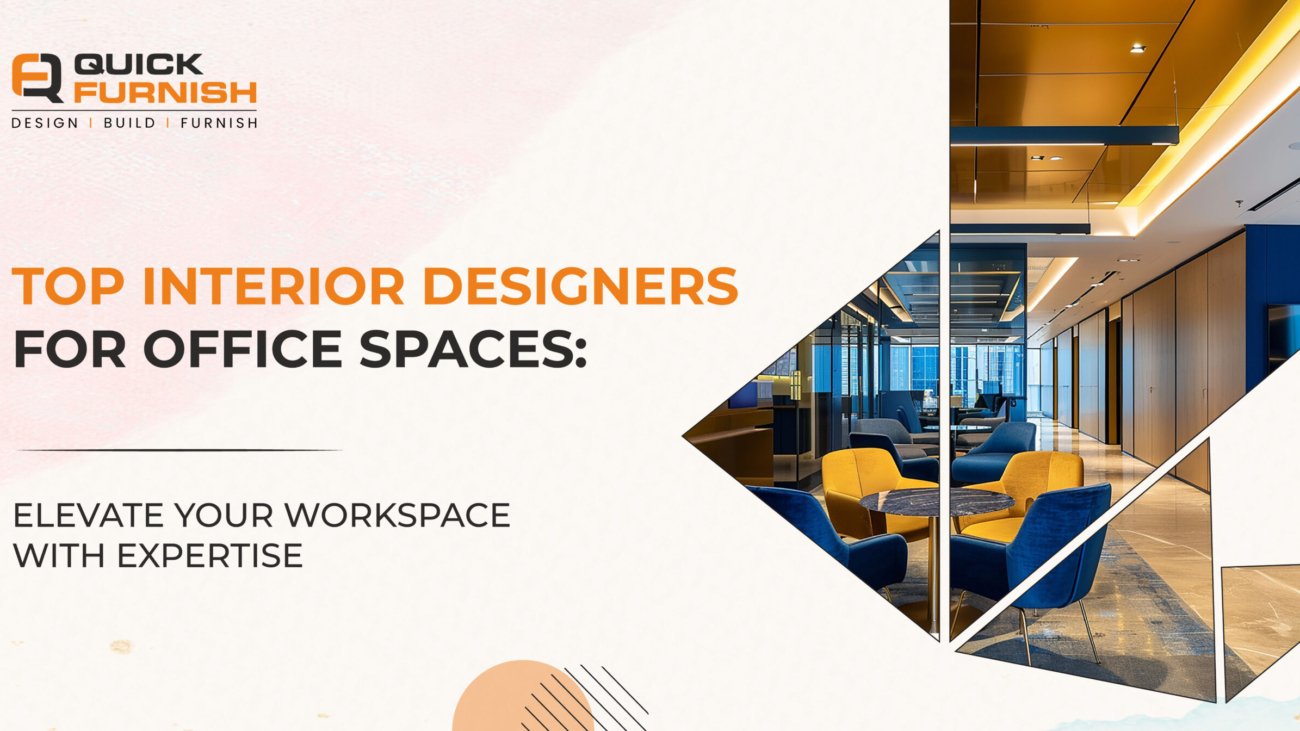In today’s fast-paced business environment, office spaces play a crucial role in fostering productivity, creativity, and overall well-being. The importance of a well-designed office cannot be overstated, as it directly impacts employee morale and efficiency. This is where top interior designers for office spaces come into play, offering expertise that transforms mundane workplaces into dynamic and inspiring environments.
In this comprehensive guide, we delve into the world of office interior design, exploring the key elements that make a significant difference and highlighting some of the best designers in the industry.
Why Interior Design Matters for Office Spaces
Interior design is not just about aesthetics; it encompasses functionality, comfort, and efficiency. A well-designed office space can:
-
- Enhance Productivity: A thoughtfully arranged office layout can streamline workflow, reduce distractions, and create a conducive environment for focused work.
-
- Boost Employee Morale: Comfortable and visually appealing workspaces can increase job satisfaction and motivation, leading to higher employee retention rates.
- Reflect Company Culture: The design of an office can communicate a company’s values and culture to employees, clients, and visitors.
-
- Improve Health and Well-being: Ergonomic furniture, proper lighting, and ventilation are critical for maintaining physical health and reducing stress levels.
Key Elements of Office Interior Design
1. Space Planning
Effective space planning is the backbone of any successful office design. It involves analyzing the available space and determining the best way to allocate it to meet the needs of the organization. Key considerations include:
-
- Workflow Optimization: Designing pathways and work zones that facilitate smooth movement and interaction.
-
- Scalability: Ensuring the design can accommodate future growth and changes.
-
- Zoning: Creating distinct areas for different functions, such as collaborative spaces, private offices, and relaxation zones.
2. Ergonomics
Ergonomics is essential for creating a comfortable and healthy workplace. This involves selecting furniture and equipment that support proper posture and reduce physical strain. Important aspects include:
-
- Adjustable Chairs and Desks: Providing furniture that can be tailored to individual needs.
-
- Proper Lighting: Implementing a mix of natural and artificial lighting to reduce eye strain.
-
- Acoustic Design: Incorporating sound-absorbing materials to minimize noise pollution.
3. Aesthetic Appeal
The visual appeal of an office can significantly impact the mood and behavior of its occupants. Considerations for aesthetic design include:
-
- Color Schemes: Using colors that evoke the desired emotional response and reflect the company’s brand.
-
- Art and Decor: Integrating artwork and decorative elements that inspire creativity and reflect the company’s identity.
-
- Textures and Materials: Choosing materials that provide both visual and tactile interest.
4. Technology Integration
Incorporating the latest technology into office design is essential for modern workplaces. This includes:
-
- Smart Systems: Implementing automated systems for lighting, temperature control, and security.
-
- Connectivity: Ensuring robust and reliable internet and network access throughout the office.
-
- Collaborative Tools: Providing technology that supports teamwork and remote work capabilities.
Conclusion
Investing in professional interior design for your office space can yield significant benefits in terms of productivity, employee satisfaction, and overall company image. By understanding the key elements of office design and choosing the right designer, you can create a workspace that not only meets your functional needs but also inspires and motivates your team.
Our commitment to excellent execution ensures that your vision is brought to life with precision and care.


